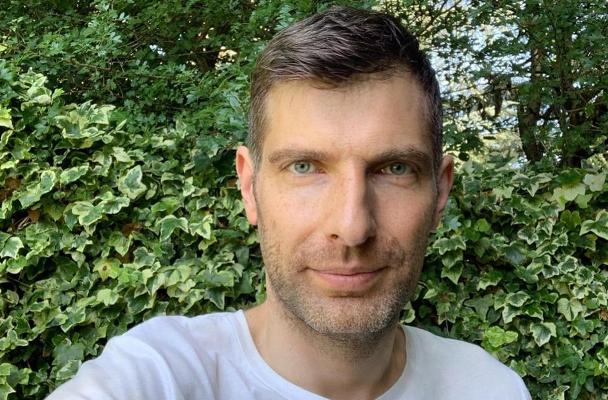He’s worked on Windows Mobile for Microsoft. He was cofounder of a company that sold to Russia’s Google, Yandex, in a reported $38 million deal that made him wealthy.
But Yaroslav Goncharov’s biggest success (and stress) has come with a company that’s miniscule by comparison: FaceApp. Leading a staff of just 12, the geeky, excitable 40-year-old has created what’s currently the world’s hottest (and possibly most controversial) app, which uses artificial intelligence-powered filters to gender-swap or radically age selfies.
It topped the download charts for both Android and iPhone this past week after millions followed celebrities like Dwyane Wade, Drake and Iggy Azalea in doing the “FaceApp Challenge.” The “challenge” was simple: take a photo, apply the aging filter and post an image on Instagram, Twitter, wherever, of the older you.
But no sooner had the FaceApp virality reached fever pitch than fear about the provenance and motives of the app’s creators emerged. First there were concerns—which swiftly proved to be unfounded—that FaceApp wasn’t just accessing submitted photos but grabbing entire camera rolls from users’ phones. Then Russophobes fretted about where all Americans’ face data was going, leading Senator Chuck Schumer to call for an FBI investigation into the app.
Goncharov (in featured photo), who promises more transparency with an updated privacy policy, was overwhelmed. “Last Thursday, I tried to count the number of calls I was getting. … I counted 200 in three hours or so,” he says. “We couldn’t do our daily work.” He’s speaking from his St. Petersburg HQ in his first interview with an English-language publication, recovering from a week in which his little company went into “crisis mode.”
Now he tells Forbes about plans to calm the privacy storm. The new FaceApp terms and policy will likely remove references to the rights that the company claimed over people’s images, he says. The current terms grant FaceApp almost complete ownership over submitted faces, letting the company use, alter and sell the photo however it wants, with no compensation for the user. “People got scared because they think everything we say in this policy we do, which of course is not the case at all,” he says.
Goncharov said those terms were so broad because he had planned earlier to turn FaceApp into a “social network for faces.” “To do this kind of product, our privacy policy had to be very similar to what Instagram had. Our current privacy policy is very similar to what Instagram has … but nobody blames Instagram, because it’s Instagram,” he adds.
Now there’s no need to mirror the privacy policy of the Facebook-owned app. “It’s my personal top priority to fix our privacy policy and terms of use,” he says, adding that he will be drafting fresh policies over the next month. “Hopefully it won’t take too long.”
He reiterates that the company deletes photos in 48 hours, asking the Amazon and Google servers, on which FaceApp runs, to automatically wipe data that’s been on the system for that time. He also notes that photos aren’t used for any commercial purposes. As for why the company stores faces on a server for 48 hours, the CEO says that users don’t want to have to re-upload a photo every time they apply a new filter. So the image has to stay on the server temporarily.
Little will therefore change at the code level, though there’s now a notification when opening the app, asking the user to confirm that they are happy that photos will be taken to a remote cloud. Besides, it’s not FaceApp that users should be worried about when it comes to privacy, but all the other apps they’re already using, Goncharov argues. “There are so many other apps that collect much more data,” he says. “We just don’t.”
An “unusual success”
At Microsoft in the early 2000s, Goncharov got a taste of the smartphone-obsessed future. He was a software developer on what was then Windows Mobile long before the iPhone and Android became a reality. He thought he was creating the first open, large-scale cellphone operating system, something like Android long before Google’s OS existed. “I was sure I was building the future,” he recalls of his time in Redmond.
But the working for a startup in his home city of St. Petersburg was too much of a draw. He joined SPB Software as chief technology officer and was one of three partners alongside Vassili Philippov and Sebastian-Justus Schmidt. The company started out developing alternative home screens for Windows Phone—a platform Goncharov was very familiar with from his time in Washington state.
But SPB had to pivot when Windows began to flounder in the face of Apple’s and Google’s rival platforms. Goncharov laments that after he left, Windows tried to compete with Apple by producing a closed system, rather than choose the open, partner-led focus that Android took. “When I think about it, it still hurts.”
Not long after SPB had refocused on Android, Russian search engine Yandex came calling with a $38 million check in 2011. The FaceApp founder won’t disclose how much he made from the deal, other than to tell Forbes: “Let’s say that I had enough money to start my own company and not worry about looking for additional investments.”
Cofounder Schmidt also declined to provide confirmation on figures.
During his time at Microsoft and then at Yandex, Goncharov, ever the engineer, became fascinated by neural networks—hardware and software that try to learn and process information like the human brain. He was particularly drawn to the idea that an algorithm could generate a face from given attributes, like gender or hair color. “The quality at that point was terrible, but there was still some magic.” He says that after six months of tinkering, the quality of the images his neural nets were creating were much better than what was previously available.
Once he left Yandex in 2013, he moved on to creating his own products, one of his first being a hotel Wi-Fi testing tool that garnered some success. But, wanting to create a product from those face-generating algorithms, he starting working on FaceApp in 2016. It launched in 2017, still in what Goncharov describes as a beta version. Even in its basic form, it went viral for the first time after a “hotness” filter made people prettier.With millions of users enamored with the app, Goncharov quickly had to formulate a business plan. His idea was that people would pay for an automated photo editor, so he added a paid-for subscription offer that would remove the FaceApp watermark and irritating ads, as well as add some premium features.
Effectively, FaceApp was to replace PhotoShop editors with AI, Goncharov ventured.
FaceApp making millions
It has paid off, according to the CEO. “We have success, but very unusual success,” boasts Goncharov, who owns 100% of the business.
Without providing substantiating data, he claims FaceApp has been profitable since the first launch two years ago, with “good” revenue and growth figures. “We’re very profitable,” he says. “I could easily have got investment from Silicon Valley… but we had enough to grow organically.” While Goncharov has no need for Silicon Valley investors for now (he says he may approach VCs in the future), others in the bubbly business of photo apps have either taken big funding rounds or been acquired. Snapchat snapped up Looksery for a reported $150 million in 2015 and Teleport for $8 million in 2018 to help grow its library of AI-powered filters, while Oakland-based photo app VSCO raised $90 million over two rounds.
FaceApp makes money from nothing more than a paid-for subscription service. But the founder declines to say how much revenue that’s drawing in or how many paying customers he has. He also won’t disclose user numbers.
Goncharov does, however, disclose that the paying customer base was roughly 1%. And looking at the number of downloads (not active users) revealed on Google Play, there are in excess of 100 million. Even taking a conservative estimate of 100 million users across Android and iOS, and just 1% signing up for a single month’s premium use at $3.99, the company is making at least $4 million per annum, and potentially a lot more if it’s locking in more users. (It’s also possible to pay $20 for a year’s access or $40 for lifetime use). Goncharov declined to comment on that estimate. But it’s not bad for a 12-employee business that’s been profitable for two years, by Goncharov’s account at least.
As for what’s next, video is on the horizon. Though other companies like Snapchat already do this with live filters, Goncharov doesn’t want to launch something that’s anything less than “magical.” He’s hoping that magic isn’t diminished by another privacy panic.
Credit: Forbes





